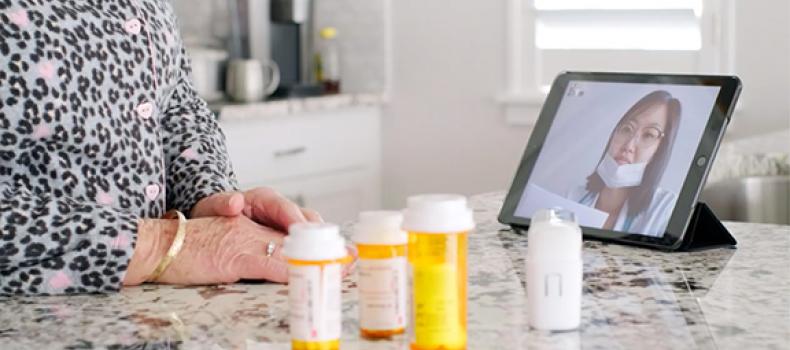The COVID-19 pandemic has increased the need for telehealth services for both healthcare providers and patients, and faculty at the Frances Payne Bolton School of Nursing at Case Western Reserve University have developed four online modules to reinforce nurses' core competencies in telehealth.
More than 400 prelicensure nursing students and several faculty members at the school of nursing completed the telehealth modules as part of a grant received by faculty Mary Dolansky from the Health Resources and Services Administration to integrate more primary care competencies into the baccalaureate nursing program.
“Nurses and nurse practitioners are moving into primary care to support higher number of patients that need care,” said Barb Tassell, a research associate at the school of nursing and an education consultant who is project manager for the telehealth course. “One growing element of primary care is telehealth. There’s a set of competencies that are needed for telehealth that the traditional curriculum largely ignores.”
Tassell said the pandemic accelerated the research and development of telehealth education across the health sciences.
“Telehealth is grew exponentially during COVID to increase access to primary care.” she said. "The supplemental funding facilitated a much larger project."
While the modules were designed to support student learning, they are now available to practicing nurses to further their knowledge and skills to meet the increasing need.
The four different modules include different aspects of telehealth.
“The first, telepresence, centers around how you work with a patient via video chat or on the phone. How do you protect patient privacy?” Tassell said. “The second includes skills on how to do a remote assessment. What resources do you have available to help identify your patient’s problem and direct the necessary care.”
The third module is on COVID-19 specific disease information, acting mostly as a refresher course on signs and symptoms, treatments and the difference between quarantine and isolation.
“The last module covers quality and safety implications of telehealth, and how we can maintain the expected quality and safety through telehealth,” Tassell said.
Second-year nursing student Melissa Martinez said the telehealth course helped focus her assessment skills to include more observational details.
“With video, you need to pay attention to what you see on the whole screen. While you’re assessing what the patient is saying, you can see their living space, and see how they’re living” she said. “On the phone, you need to evaluate how the patient is sounding, what their environment sounds like, and hope they’re telling you everything.”
Internet access was another point that stuck with Martinez as many patients lack a strong Internet signal to host a video visit. Prioritizing adequate access to technology to use telehealth services was another feature of the modules.
“One example in the module was a pregnant patient who was trying to see their primary care provider, but it was too far and too difficult to see them,” she said. “The provider worked with a clinic that was closer to the patient, and hosted a video conference with her primary care provider there.”
The modules were developed by Carol Savrin, nursing school faculty; Kathleen Szymanski, nursing school DNP student; and Tassell.
To further support development of telehealth competency, some BSN, MN and MSN students also participated in telehealth simulations, working with remote monitoring technology, such as pulse oximeters and blood pressure equipment. Four different simulations have been created to help teach telehealth using different modalities and reaching different levels of learners.
The expert simulation development team included faculty members Carol Kelley and Elizabeth Zimmermann. Supporting the project was alumna and consultant Kari Gali. Faculty members Amy Lower and Jessica Hoskin performed the roles of standardized patients and student evaluations. Technology support was provided by staff members Allen Selker and Messias Soares.


